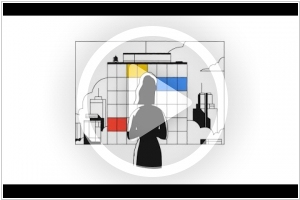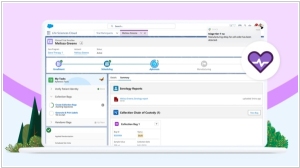Top 10: Enterprise collaboration software
Updated: August 01, 2023
Enterprise collaboration software is a comprehensive digital solution designed to facilitate seamless communication, teamwork, and knowledge sharing among employees within an organization. This software provides a centralized platform where team members can collaborate on projects, share files, exchange ideas, and communicate in real-time, regardless of their physical locations. Enterprise collaboration software often includes features such as team messaging, video conferencing, document collaboration, task management, and integration with other business tools like email and project management systems. By fostering a culture of collaboration and transparency, this software enhances productivity, accelerates decision-making, and promotes innovation within the organization. Moreover, with advanced security measures and access controls, enterprise collaboration software ensures data privacy and compliance with industry regulations. As businesses continue to embrace remote work and global collaboration, enterprise collaboration software plays a crucial role in facilitating effective communication and collaboration among teams and driving business success.
Some of the most popular enterprise collaboration software options are listed below.
See also: Top 10 Enterprise Portals
See also: Top 10 Enterprise Portals
2021. Microsoft launches Google-Wave-like collaboration service Loop
Microsoft is introducing Microsoft Loop, an app that brings back the essence of Google Wave, the real-time messaging and collaboration platform launched by Google in 2009 and discontinued in 2010. Loop is designed for real-time editing-based applications, enabling users to collaborate on documents seamlessly. It allows teams to have a comprehensive view of their project, facilitating catch-up on individual contributions and tracking progress towards shared objectives. Loop Pages serve as canvases for organizing components and incorporating useful elements such as links, files, or data based on specific project requirements. Additionally, Loop Components can be embedded within pages, documents, or chats, offering features like lists, tables, notes, or even customer sales opportunities from Dynamics 365.
2018. IBM sold Lotus Notes/Domino, Websphere Portal and other software to HCL
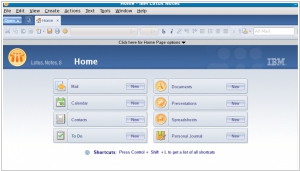
IBM is in the process of selling its renowned enterprise collaboration software, Lotus Notes, to the Indian company HCL for $1.8 billion. These products have been a significant component of IBM's enterprise business for a considerable period. However, last year, IBM began divesting the development segment to HCL while retaining control over sales and marketing. With the platform's development now outside of IBM's purview and the need for funds after a $34 billion expenditure on Red Hat, it appears that IBM decided it was no longer viable to retain any part of Lotus Notes in-house. On the other hand, HCL recognizes an opportunity to further develop the Notes/Domino business and is seizing it through this acquisition. HCL's interest in Notes/Domino surpasses what IBM has shown over the past decade, as they are heavily investing in rejuvenating the brand. Notes and Domino still maintain a presence in various enterprise sectors, particularly in EMEA (Europe, Middle East, and Africa). This strategic move aligns with IBM's shift towards advancing its cloud business in a different direction. The acquisition of Red Hat in October, in particular, demonstrates IBM's focus on embracing private and hybrid cloud deployments, whereas older software like Lotus Notes and Domino have limited relevance in this new realm.
2017. Facebook Workplace gets desktop app
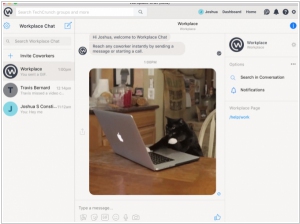
Facebook has fulfilled the long-standing request of its users by launching official desktop PC and Mac chat apps that include the highly desired features of screen sharing. Currently, these apps are exclusively available for Workplace, Facebook's enterprise collaboration software, which directly competes with other business applications like Slack. With over 14,000 businesses already utilizing Workplace and paying a fee of $1 to $3 per user, the recent addition of Wal-Mart to its client base further strengthens its position. The introduction of screensharing has the potential to attract more clients to Workplace by offering a superior alternative to the cumbersome screensharing options found in apps such as Skype and WebEx. Facebook's approach of swiftly developing an all-in-one collaboration app signifies its determination to dominate the office space, unlike its competitors who only provide fragmented solutions.
2016. Google Apps rebranded as G Suite
Google has rebranded its online office suite, formerly known as Google Apps for Work, as G Suite. According to Google, this name change better aligns with their mission of fostering collaborative work and innovation among individuals worldwide. While it may initially appear as a mere title change, it signifies Google's renewed interest in the enterprise collaboration market. This shift suggests that we can anticipate significant advancements and innovations in Google's office suite in the near future. Notably, Google has promised to introduce more machine intelligence features, enabling users to interact with Drive, Docs, and Spreadsheets using natural language commands and queries. The pricing for G Suite remains unchanged at $5 per user per month.
2012. Microsoft SharePoint adds Firefox and Chrome support
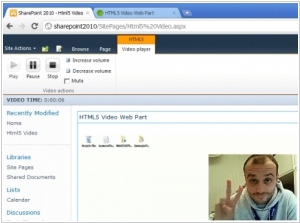
Recently, we observed a prolonged absence of news regarding the advancements of the renowned enterprise software powerhouse, Microsoft SharePoint, which serves as an intranet system. However, today we received noteworthy updates: SharePoint 2010 has finally introduced comprehensive support for third-party browsers such as Firefox, Chrome, and partial support for Apple Safari. The developers claim that previous limitations of these browsers prevented the utilization of the full range of features offered by the SharePoint interface. This is truly an impressive accomplishment by the SharePoint development team. Unfortunately, there is still no information regarding support for mobile platforms, excluding Windows Phone. However, there is mention of enhancements in the realm of social features. Jared Spataro, Microsoft's senior director of SharePoint product management, recently emphasized their diligent exploration of social networking technologies for fostering enterprise collaboration. Microsoft aims to augment the enterprise social capabilities within SharePoint. It appears that SharePoint is indeed undergoing a challenging phase.
2010. Cisco Quad - enterprise social software + video
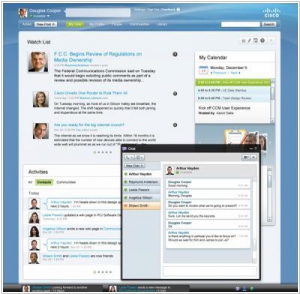
Late last year, Cisco introduced the social intranet system with a long name Cisco Enterprise Collaboration Platform and this solution hit the Top 10 Enterprise 2.0 products in 2009 by ReadWriteWeb. Now Cisco starts selling the system under the new name - Cisco Quad. The functionality of the system at first glance seems to be traditional for enterprise social software: user profiles, personal start pages, microblogs and communities (for group collaboration). But of course, Cisco added to the system its main feature - video. From anywhere in the system, where user's avatar appears, you can see his online status, send him an instant message or start a video conference. And, of course, Cisco Quad is closely integrated with Cisco Webex web conferencing service and Cisco Unified Communications . ***
2009. Novell Pulse - Google Wave for enterprise
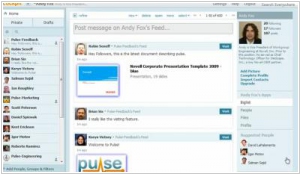
Novell was formerly #3 after Microsoft and IBM on the enterprise collaboration market (with its email system Novell GroupWise). When intranet solutions became popular, the company unveiled with some delay Novell Teaming, which it positioned as a Sharepoint alternative. But this system hasn't become very popular. So now Novell hurry to be among the first vendors to provide modern enterprise social systems with real-time capabilities. The new Novell hope is Novell Pulse, that looks very similar to Google Wave and also is able to work with this Google product. Novell Pulse - is a unique tool, as it provides a combination of microblogging, social networking and next generation real-time messaging. ***


